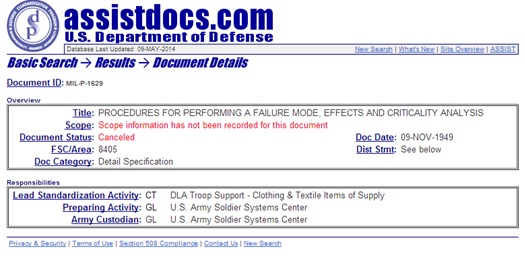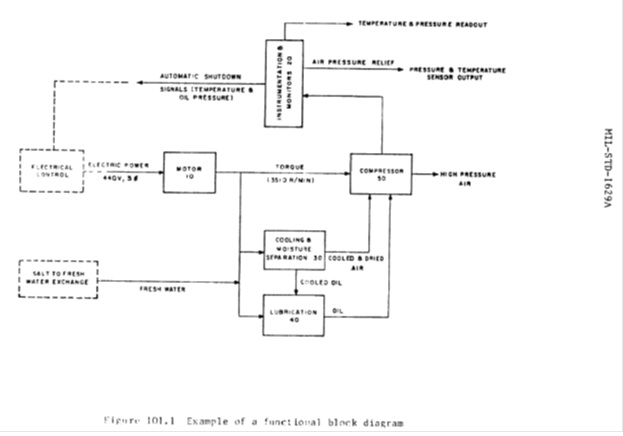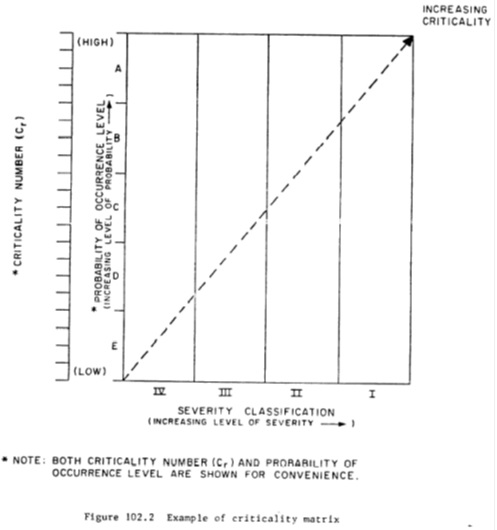
Sabal Food Safety Consulting's Blog / May 11th, 2014
HACCP History Research / Background of HACCP
We have always heard that the Hazard Analysis and Critical Control Points (HACCP) system came to life when Pillsbury and NASA joined efforts in developing a system to produce the food the astronauts will consume when traveling outside the earth.
The FAO’s HACCP Training states: “The HACCP concept was pioneered in the 1960s by the Pillsbury Company, the United States Army and the United States National Aeronautics and Space Administration (NASA) as a collaborative development for the production of safe foods for the United States space programme. NASA wanted a "zero defects" programme to guarantee the safety of the foods that astronauts would consume in space. Pillsbury therefore introduced and adopted HACCP as the system that could provide the greatest safety while reducing dependence on end-product inspection and testing.”
I learned about the use of the “Failure Mode, Effects and, Criticality Analysis” (FMECA) as a systematic method to analyze the design of something from concept to realization, mass production during a class at the university. This system is extremely similar to HACCP so I started researching for more information about the origins of the HACCP System and the similarities between HACCP and FMECA.
The oldest reference I have found so far for the application of FMECA is: “FMECA was originally developed in the 1940s by the U.S military, which published MIL–P–1629 in 1949. By the early 1960s, contractors for the U.S. National Aeronautics and Space Administration (NASA) were using variations of FMECA under a variety of names. In 1966 NASA released its FMECA procedure for use on the Apollo program. FMECA was subsequently used on other NASA programs including Viking, Voyager, Magellan, and Galileo. Possibly because MIL–P–1629 was replaced by MIL–STD–1629 (SHIPS) in 1974, development of FMECA is sometimes incorrectly attributed to NASA.”
In my search for MIL-P-1629, I found this standard was “cancelled” by the U.S. Department of Defense (See the image below). It was replaced by MIL-STD-1629 (SHIPS) on November 1st, 1974 and, the current version, MIL-STD-1629-A, was adopted on November 24th, 1980.

The FMECA analysis procedure typically consists of the following logical steps:
• Define the system
• Define ground rules and assumptions in order to help drive the design
• Construct system block diagrams
• Identify failure modes (piece part level or functional)
• Analyze failure effects/causes
• Feed results back into design process
• Classify the failure effects by severity
• Perform criticality calculations
• Rank failure mode criticality
• Determine critical items
• Feed results back into design process
• Identify the means of failure detection, isolation and compensation
• Perform maintainability analysis
• Document the analysis, summarize uncorrectable design areas, identify special controls necessary to reduce failure risk
• Make recommendations
• Follow up on corrective action implementation/effectiveness
As you can see, it is a systematic procedure or process and, very similar in concept to the steps of a HACCP System.
In a copy of the U.S Military Standard MIL-STD-1629-A I have, I pulled some of the definitions of a FMECA system with the intention of highlight their similarity with the HACCP System terms and/or concepts:
• Corrective action: a documented design, process, procedure or materials change implemented and validated to correct the cause of failure or design deficiency.
• Criticality: a relative measure of the consequences of a failure mode and its frequency of occurrences.
• Criticality Analysis: a procedure by which each potential failure is ranked according to the combined influence of severity and probability of occurrence.
• Severity: the consequence of a failure mode. Severity considers the worst potential consequences of a failure, determined by the degree of injury, property damage, or system damage that could ultimately occur.
The classification of the severity in the MIL-STD-1629-A is consistent with MIL-STD-882 and defined as follows:
• Category I – Catastrophic – A failure which may cause death or weapon system loss (i.e., aircraft, tank, missile, ship, etc.)
• Category II – Critical – A failure which may cause severe injury, major property damage, or major system damage which will result in a mission loss.
• Category III – Marginal – A failure which may cause minor injury, minor property damage, or minor system damage which will result in delay or loss of availability or mission degradation.
• Category IV – Minor – A failure not serious enough to cause injury, property damage, or system damage, but which will result in unscheduled maintenance or repair.
The classification of the “Probability of Occurrence Levels” in MIL-STD-1629-A is defined as:
• Level A – Frequent. A high probability of occurrence during the item operating time interval. High probability may be defined as a single failure mode probability greater than 0.20 of the overall probability of failure during the item operating time interval.
• Level B – Reasonably probable. A moderate probability of occurrence during the item operating time interval. Probable may be defined as a single failure mode probability of occurrence which is more than 0.10 but less than 0.20 of the overall probability of failure during the item operating time interval.
• Level C – Occasional. A occasional probability of occurrence during the item operating time interval. Occasional probability may be defined as a single failure mode probability of occurrence which is more than 0.01 but less than 0.10 of the overall probability of failure during the item operating time interval.
• Level D – Remote. An unlikely probability of occurrence during the item operating time interval. Remote probability may be defined as a single failure mode probability of occurrence which is more than 0.001 but less than 0.01 of the overall probability of failure during the item operating time interval.
• Level E – Extremely unlikely. A failure whose probability of occurrence is essentially zero during the item operating time interval. Extremely unlikely may be defined as a single failure mode probability of occurrence which is less than 0.001 of the overall probability of failure during the item operating time interval.
The classifications and ratings of severity and likelihood above are quite similar in concept with the risk matrix we use for determining the risks of the food safety hazards when using the HACCP System.
“Section 4.5 FMECA Report” of the MIL-STD-1629-A states: “The results of the FMEA and other related analyses SHALL be documented in a report that identifies the level of analysis, summarizes the results, documents the data sources and techniques used in performing the analysis and includes the system definition narrative, resultant analysis data, and worksheets.” This is similar to a HACCP System’s documentation.
“Section 4.5.2.2 Single failure points list” of the MIL-STD-1629-A states: “A separate list of all single failure points SHALL be provided. The information described above shall be provided in the summary for each single failure point listed such that it is possible to identify directly the FMEA entry and its related drawings and schematics. The criticality classification for each single failure point SHALL be included in the listing.” This is similar to a HACCP Plan form.
Evidence that NASA was using FMECA can be observed in a two page “Preferred Reliability Practices” document “Practice No. PD-AP-1307” titled “FAILURE MODES, EFFECTS AND CRITICALITY ANALYSIS (FMECA)”. This document states something that is very important, not only for the implementation of FMECA, but for HACCP: “The FMECA has been recognized as such an approach and, if implemented rigorously, will provide the necessary visibility.”
After reading the information provided above about FMECA and MIL-STD-1629-A, anyone will agree that the concepts used by FMECA were the basis for the development of the HACCP System.
A copy of a “Block Diagram” and a “Criticality Matrix” were added below as to show more evidence of the similarity of FMECA and HACCP Systems.

This is an example of a “Block Diagram” as required by MIL-STD-1629-A. Is the same concept and use of the flow diagram of the production of a food product.

This is a “Criticality Matrix” under MIL-STD-1629-A. Even though a graph is used to represent “criticality”, the data used to build this graph can be used to construct a matrix like the one used in HACCP to analyze the risks of the food safety hazards.
As a conclusion and in my opinion, there is sufficient evidence indicating that the U.S Army FMECA was the background concept for the implementation of the HACCP System in food processing facilities.
Feel free to leave your comments or opinion below... Join as a member of Sabal Food Safety Consulting ...its free and you'll be receiving updates with the contents of future blogs. Go to the "Home" page, locate the cursor on top of "Other Services" and click "Register". You can also read other blogs by going to the "Home" page, locate the cursor on top of "Other Services" and click on "Blog".




